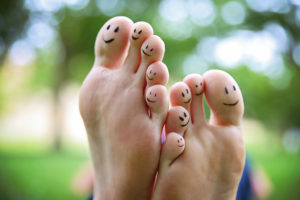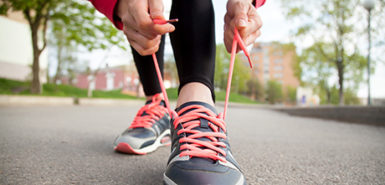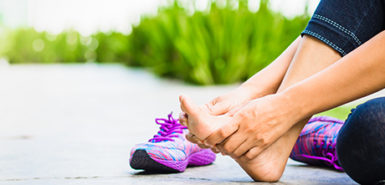
Toes may well be the most neglected parts on our body, but when something goes wrong they can generate plenty of pain.
And for those who like a good workout—running, hiking, soccer, walking and the like—these peanut-sized digits take it on the chin.
While a variety of things can go wrong with your toes, there is a single preventive solution to almost all of them: The right shoe in the right size, said John Harris, DPM, a foot and ankle surgery specialist with Spectrum Health Medical Group Orthopedics.
“You should wear the appropriate shoe for your activity and it needs to fit well,” Dr. Harris said. “There should be a thumb’s distance between the end of your longest toe—whether that’s the big or second toe—and the end of the shoe.”
A general athletic shoe is OK for low-level participation in any sport, but Dr. Harris recommends upgrading to a sport-specific shoe the moment you become serious about a workout.
Ill-fitting shoes are the source of many problems.
With every step, you wind up bashing the front of your toe into the shoe, causing micro-injuries that soon add up to significant issues.
This causes two of the most common toe woes: injured toenails and callouses.
Injured toenails
They go by the not-so-catchy name of subungual hematoma—a collection of blood under the nail. These wounds stem from some kind of insult, often from poorly fitting shoes.
If they are painful, have a doctor check them out.
“Sometimes, we can drain the blood out and reduce pain,” Dr. Harris said.
Even when these toenail injuries don’t hurt, healing requires some patience. It can take eight months to a year for a toenail to replace itself.
Callouses
People often accept callouses as inevitable because of the shape of their toes.
Dr. Harris said underlying conditions, such as hammertoe, certainly make callouses more prevalent.
But properly fitting shoes can prevent this problem.
Treatment for painful callouses includes modifying the style and fit of the shoe. In some cases, surgery is needed to straighten the toe. (Wondering what the difference is between a callous and corn? Nothing—a corn is just lay terminology.)
See a provider about any stubborn toe pain and rethink the way you shop for shoes. Check and double-check the fit, keeping in mind that sizes can vary from model to model.
Runners and soccer players are particularly prone to the smaller-is-better myth, resulting in plenty of toe problems.
According to Nike, the behemoth shoe manufacturer, about 60% of Americans are walking around in shoes of the wrong size.
If you’ve got growing kids, Dr. Harris suggests using the same fit-test on them at least twice a year.
“Kids’ sizes change so fast that parents have to be vigilant,” he said. “I do the thumb test on my kids at the start of every sport season. If their toes are smashing against the end of the shoe, they need a new pair.”
 /a>
/a>
 /a>
/a>
 /a>
/a>